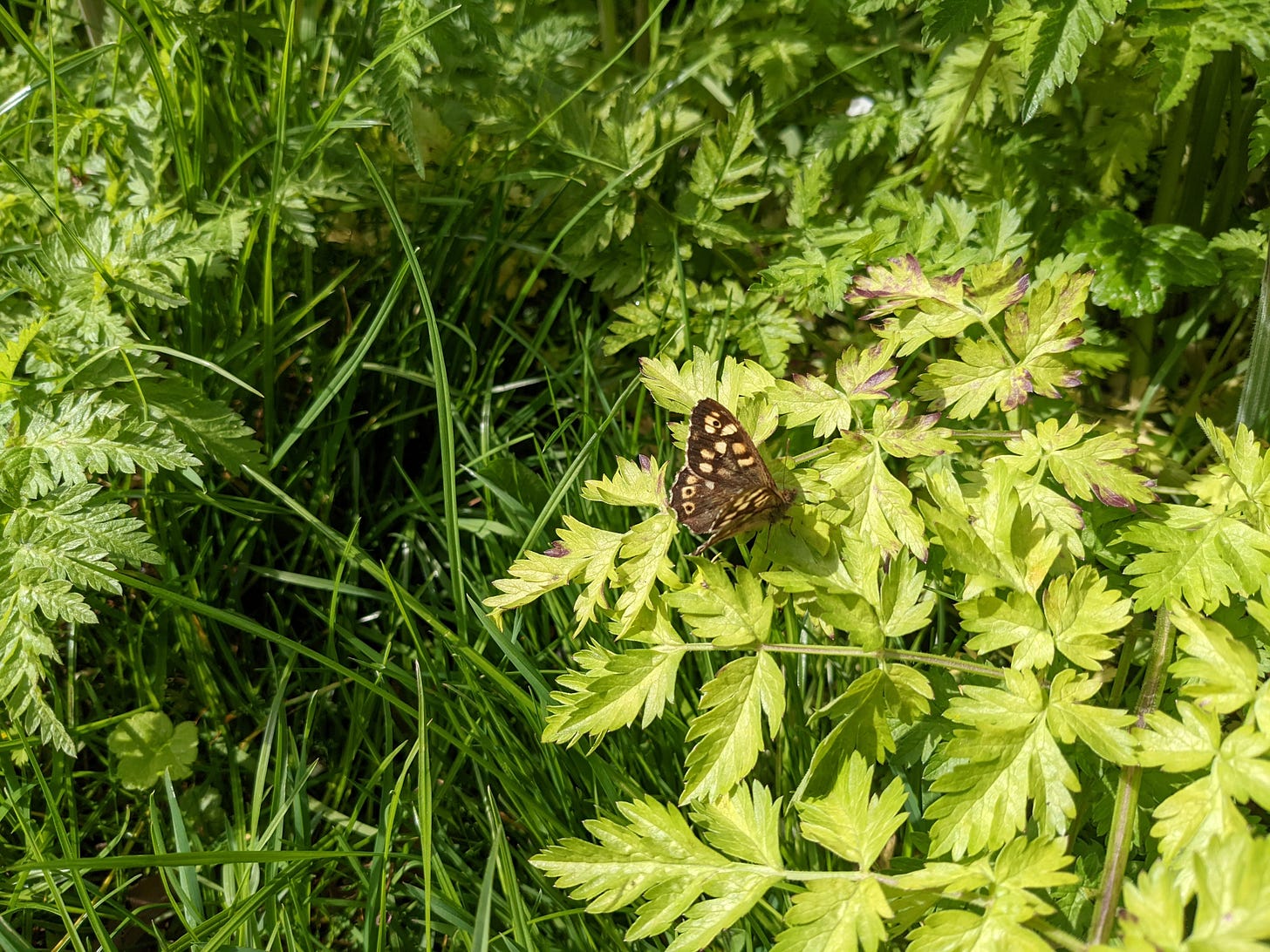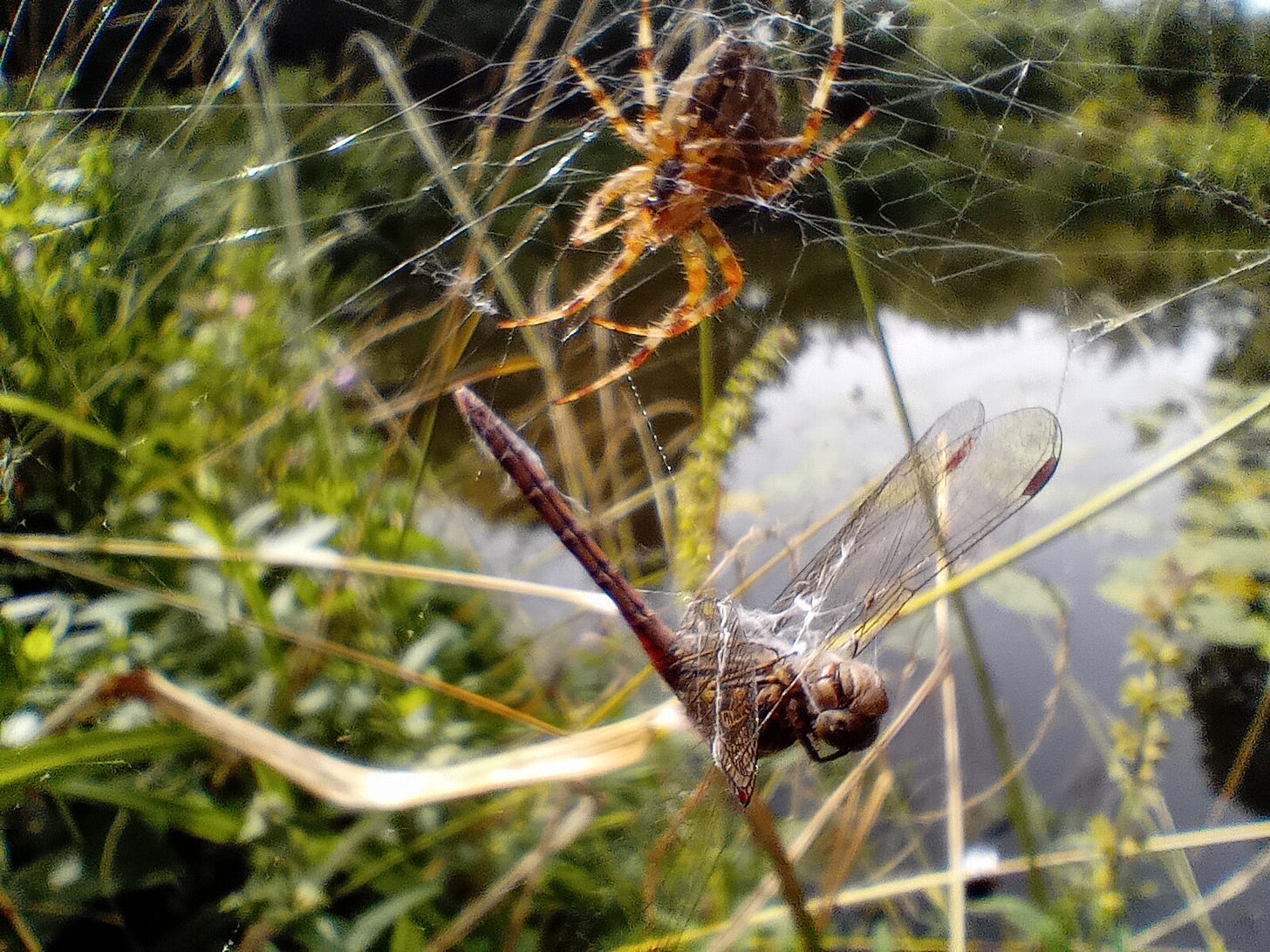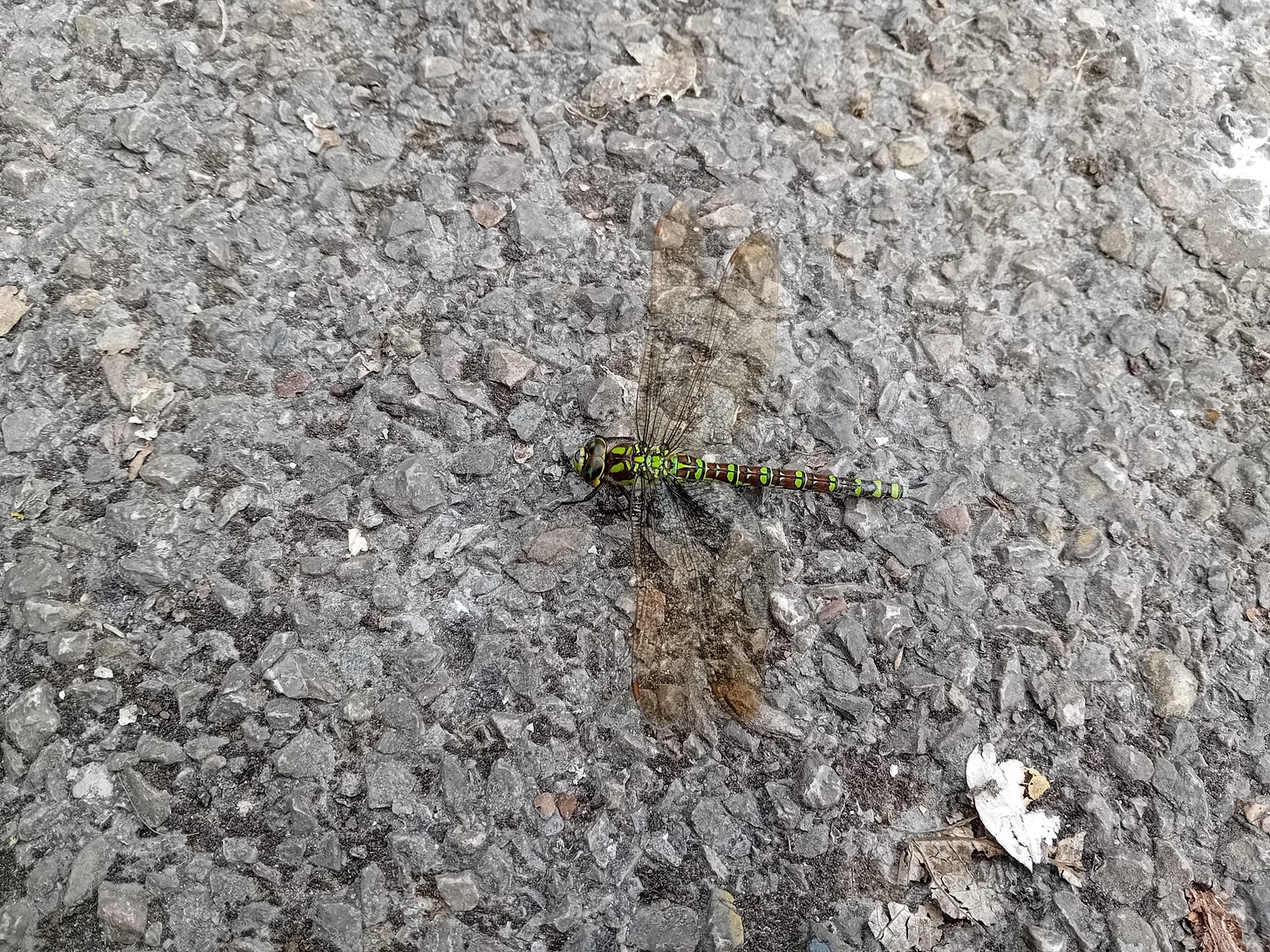
Summer arrived late in England this year and didn’t last long but then we had another week of bright, sunny days in mid-September. This just happened to coincide with my turn on the rota for the butterfly transect at One Tree Hill, so I had almost perfect conditions for my final survey of the season. I saw 26 butterflies in total – not bad given the lower numbers we’ve been recording all season – but there was little variety. Six were Large or Small Whites and the rest were all Speckled Woods, the butterfly that puts in an appearance for most of our surveys there.
That same week, Butterfly Conservation published the results of this year’s Big Butterfly Count, confirming what many had feared and expected – a significant drop in butterfly numbers across the country. In fact, the numbers recorded were the lowest in the 14-year history of the annual survey with participants recording an average of just seven butterflies per 15-minute count compared to 12 last year, a reduction of almost 50%. The previous lowest average was nine in 2022.
While the results haven’t come as too much of a surprise to anyone with an interest in insects, it does provide stark evidence of the situation. The findings have so alarmed Butterfly Conservation that the charity has declared a national ‘Butterfly Emergency’ and is calling on the Government to ban neonicotinoid insecticides completely. These chemicals are already banned in many other European countries, but the previous UK Government allowed their ‘emergency’ use for the last four years after farming unions argued it was essential for protecting the sugar beet crop from the Virus Yellows disease.
When the latest emergency approval was granted in January, The Wildlife Trusts described it as a ‘deathblow’ for wildlife. The problem is that neonicotinoids, or ‘neonics’ as they are sometimes called, don’t just kill the insects they’re licensed for, but also cause huge harm to butterflies, bees and other insects. Once in the soil, the neonics remain active for years and can then be washed away to contaminate other areas of soil or get into waterways causing contamination there too. Agriculture isn’t the only source of the deadly chemicals either – they are also used in many of the common tick, worm and flea treatments for pets.
As if being poisoned by the very plants they rely on for sustenance were not bad enough, insects are also being harmed by other forms of pollution. A recent study by the University of Reading identified that butterflies and bees are particularly badly affected by air pollutants such as nitrogen oxides, ozone and particulate matter. The researchers found that pollinators experienced a 39% decline in foraging efficiency after being exposed to increased levels of air pollution and suggest this is because air pollutants have an impact on the scent trails which insects such as bees rely on to locate flowers or find mates. The study also identified that aphids and other insects which destroy crops are not significantly affected by air pollution probably because they rely more on direct contact or visual cues rather than airborne scent cues.
Poor air quality is another area where the Government needs to take stronger action - it’s also a major public health issue - and there’s a lot more they could be doing to address some of the major sources of air pollution, such as transport. Providing more support for sustainable and active forms of transport such as walking and cycling and electrifying the rail network would not only help improve air quality and encourage people to take more physical activity as part of their daily lives, but it would also help tackle the climate crisis, something else which is having a devastating impact on insects. The UK’s butterflies have had to contend with some particularly challenging weather conditions this year, including a very wet spring and much cooler than average temperatures well into July.
At least some insects were able to take advantage of summer’s return in mid-September. A couple of days into the week of warm sunny days, our next neighbour called round to warn me that we might want to shut the windows at the back of our house as there were lots of bees on the ivy that grows on the fence between our gardens. When I went out into the back garden, expecting to find a swarm there, I discovered a dozen or so bees buzzing around the ivy flowers, and taking absolutely no interest in us or the house. They were just doing what bees need to do - collecting the nectar and pollen which will see them through the winter. Ivy is one of the most important sources for this. After seeing so few insects in the garden all summer, it was great to finally see a part of it filled with insect life.
I had another interesting, if slightly gruesome, insect encounter a few days before that while out for a walk with my partner. We had stopped to look at the pond in Twinkle Park in Deptford as we’ve often since a heron there in the past. The only birds there this time were a couple of coots, but I spotted a few dragonflies too, one of which particularly caught my attention as it was fluttering very feebly and not moving anywhere. When we got near enough for a closer look, we realised it was trapped in a spider’s web and then while we watched in slightly horrified fascination, the spider appeared and with swift efficiency proceeded to encase the unlucky dragonfly in its web, immobilising it completely, presumably in preparation for later consumption. The web already contained another dead dragonfly so the spider would be well fed.
Elsewhere on that same walk, I finally managed to get a fairly decent photo of a live dragonfly when a Southern Hawker posed obligingly right in front of me. The dragonfly was in the middle of the path near Stave Hill Ecology Park when I spotted it. After taking a few pictures, I was wondering whether I should move it to somewhere safer, and how I would do that but luckily it flew off at exactly that moment. It was stunningly beautiful and I’m not sure my photo really does it justice.
The occasional glimpse of insects such as dragonflies and butterflies certainly enhances the beauty of a summer’s day but there are other far more important reasons why the loss of insects matters. Without them there would not only be no summer but no future. Over three-quarters of the world’s food is dependent to some extent on pollinators, and even insects that are rarely celebrated for their looks and which many people loath or fear play a vital role, for example, wasps provide natural pest control. The decline in insect numbers truly is an emergency. We need the ban on neonicotinoids Butterfly Conservation is calling for, but we need the Government to take other action to protect insects too, and there’s little things we can all do, like leaving ivy to flower if we have some in our garden.
To finish….
…a few things I’d like to share:
Calling for Government Action: If you want to support Butterfly Conservation’s call for the Government to declare a nature emergency and to implement an immediate and permanent ban on neonicotinoid pesticides, you can sign their letter to the Government here.
London’s Local Nature Recovery Strategy (LNRS): the Greater London Authority (GLA) and the London Wildlife Trust are asking Londoners to suggest areas of the capital where there should be more focus on restoring nature. The GLA will use these suggestions to help inform the LNRS which it is preparing for public consultation next Spring. You can read more about it and submit your suggestions here.
Letter from Gwaith Powdwr, Penrhyndeudraeth: This nature reserve is about ten minutes’ walk away from where my parents live and I try to go there at least once whenever I visit them. Not only is it a wonderful place in its own right but it provides great views of the surrounding countryside, and the site has a fascinating history as it was an explosive works for many years. If you’re ever in the area you should definitely visit. You can read my Letter from Gwaith Powdwr which was published in Nation.Cymru recently here.




Great piece. It was grim this summer even in Scotland. It was so evident
We had a few days away just when the weather was at its best and were delighted to see Small Coppers as well as Peacocks and white butterflies. Sadly though very few butterflies or insects of any kind over most of the summer here in Scotland.